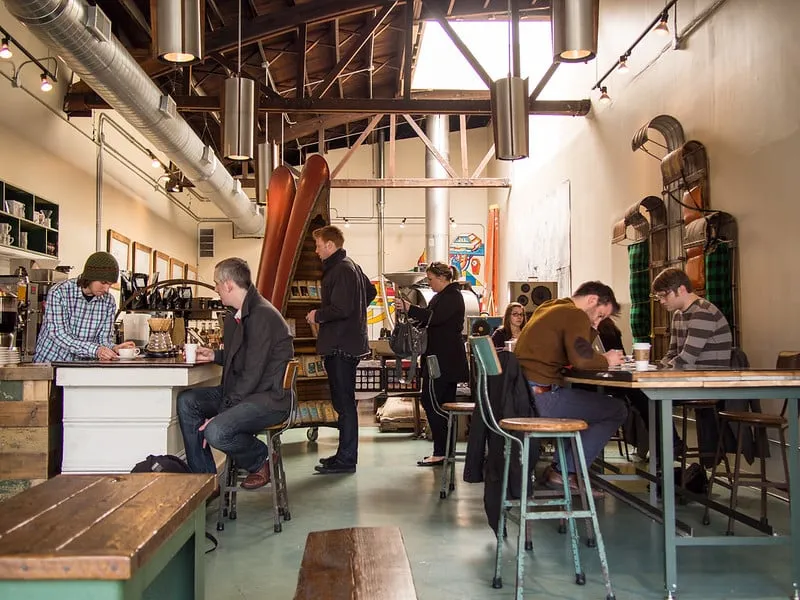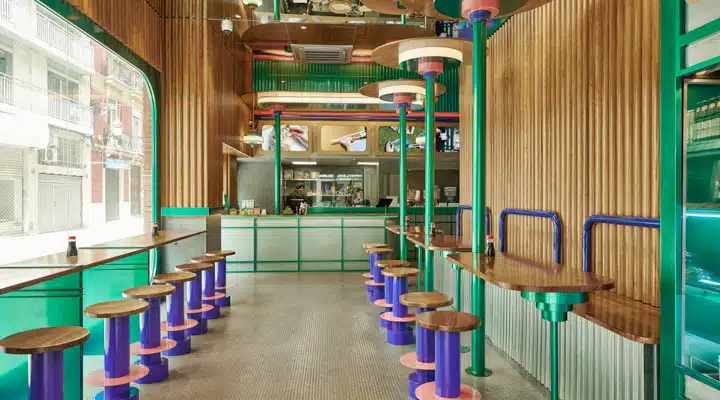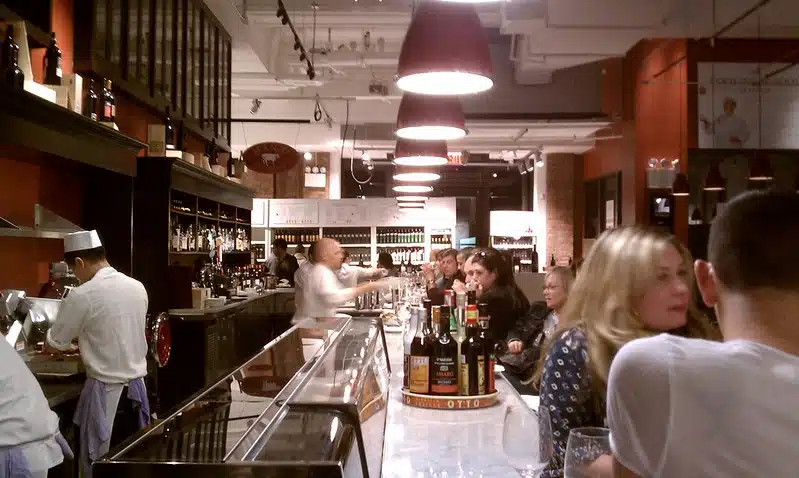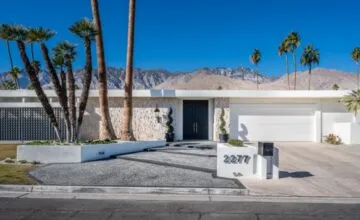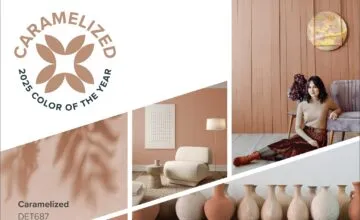3 Ways Design Is Impacting The Restaurant Industry
02/19/2020 | specs+spaces staff |
Today, more than ever, design is impacting the restaurant industry. There’s a lot of competition in the dining world, hefty staffing, overhead costs, and new and changing tastes. Amid these challenges, creating a hospitality space with impact and staying power can be difficult. We recently explored design trends from around the world in our 2020 restaurant design report, and we also know that restaurant design goes far beyond material choices. In today’s world of Postmates and Uber Eats, attracting customers to a physical restaurant is about more than simply creating a place in which to dine; it’s about creating a complete and memorable dining experience from — pardon the pun — soup to nuts. With that in mind, we’re diving a little deeper into the world of restaurant design to get a sense of how design, and its by-products, can help these hospitality establishments succeed in a crowded field.
A Unique Feature
Bow truss ceiling. Photo credit: EDSEL LITTLE
Restaurants stand out when they establish their individual character. That means creating or highlighting a character-defining design feature, like bow truss ceilings, unique tile work, or other elements that “will speak to a restaurant’s audience — the food and beverage industry is an intrinsically performative one, and becoming more so,” stated Dean Harrada, a Los Angeles commercial broker specializing in restaurant spaces with Paloma Realty Partners. For restaurants today, it’s all about the complete dining experience; and it’s no secret that experiences are driving design, with more and more design decisions geared toward the idea of cultivating a kind of performance or experience aspect to envelop diners.
Color and Graphics
Photo credit: Luis Beltran
One of the trends we identified in our 2020 restaurant design report is the use of bold color, patterns, and graphics in restaurant spaces. High contrast graphics with bold and bright lettering on the walls are some of the ways restaurants are speaking to their communities, noted Stephanie Ragle, co-founder of Los Angeles architecture firm office42. In their newly-designed South LA Cafe, for example, Ragle explained that graphic messaging with the words "Coffee. Community. Connection." are printed on the walls as a way to harness the cafe’s mantra and remind both customers and workers. Design firm FormRoom also employed bold, graphic messaging in their design for London-based ice cream shop Milk Train. Similarly, bold graphics
were also a design choice implemented by KatzDesignGroup in their concept for Scoopwell’s Dough Bar in Phoenix, AZ.
Photo Credit: Scoopwell's Dough bar
Food Halls and Community
When it comes to the world of restaurant design, the trend of food halls is exploding, stated architect Ragle, whose firm is designing Blossom Market Hall in L.A.’s San Gabriel Valley and previously designed a restaurant collective in L.A.’s Highland Park neighborhood. They’re a collection of unique and often artisanal and/or global eateries in one communal setting. Food halls allow for a lower barrier to entry for emerging chefs. “Part of our design focus for these spaces is to design a sort of ‘kit-of-parts’ vendors to plug into,” stated Ragle. With a lower barrier to entry food halls enable a more experimental environment for niche cuisine. Food halls have emerged not only across the country in places like Nashville, Minneapolis, Seattle, and Los Angeles according to Thrillist, but also worldwide with the success of concepts like Eataly. The popularity of food halls and the adventure they provide diners underscores the fact that designing an experience creates an impact for leading edge restaurants.
Eataly. Photo Credit: CARL MIKOY
Food halls also point to a trend within the restaurant world of community, as well as nostalgia. In fact, the emphasis on community in design is something we see echoed in restaurant establishments like Lodgic Everyday Community in Illinois. And while food halls are particularly current, the concept itself might not be all that new. It could be said that food halls are the 21st-century’s take on the mall food court, especially as the demise of the suburban shopping mall leaves a void for this kind of boisterous, communal dining experience. Nostalgia can a powerful force in architecture — it provides comforting, familiar places, connects us with a shared experiences, and, in the case of some rapidly changing areas, it has been utilized as an effort to ease gentrification concerns.
Interested in learning more about leading edge restaurant design and global design trends? Take a look at our 2020 restaurant design report.
Featured Articles
-
Best Oranges for the Perfect Summer Beach Cottage
-
Get Ready for Fall with These Trendy Color + Design Moods
-
Try These Color Palettes To Nail A Tomato Girl Summer At Home
-
Embracing Barbiecore: Popular Pinks Throughout The Ages
-
The Color Yellow: Essential Color Theory, Symbolism and Design Application







